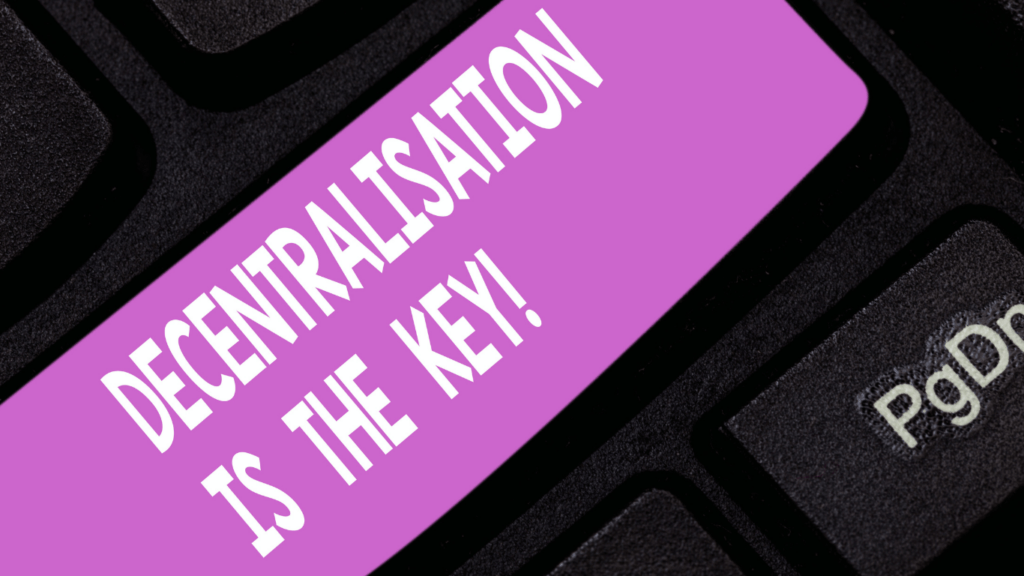Blockchain technology has transformed industries, but its fragmented nature often leaves ecosystems isolated. Each blockchain operates like its own island, limiting the potential for seamless collaboration and data sharing. This lack of connectivity can stifle innovation and slow down adoption.
Understanding Interoperability
Interoperability refers to the ability of different systems or networks to work seamlessly together. In blockchain, it bridges communication gaps among isolated ecosystems, enabling efficient data sharing and collaboration.
What Is Interoperability?
Interoperability in blockchain allows distinct networks to exchange information, assets, and services without intermediaries. For instance, a digital asset on Ethereum can interact with a smart contract on Solana if the two systems are interoperable. Cross-chain protocols, APIs, and standards like the Inter-Blockchain Communication (IBC) protocol facilitate these exchanges by standardizing how blockchains interact. This eliminates the need for centralized exchanges or manually converting assets between networks, reducing friction and increasing operational efficiency.
Importance In Blockchain Ecosystems
Interoperability ensures scalability and innovation in the blockchain landscape. Fragmented systems limit cross-platform collaboration, but interoperable ecosystems enable developers to build applications that leverage multiple networks’ unique capabilities. For example, a DeFi user could seamlessly transfer liquidity across different chains, enhancing functionality and user experience. Additionally, businesses benefit from reduced costs and improved efficiency since they can integrate multiple blockchains into their operations without compatibility constraints. This interconnected approach fosters trust and accelerates the adoption of blockchain technology worldwide.
Current Challenges In Blockchain Interoperability
Interoperability is vital for blockchain growth, but several challenges persist. These challenges hinder seamless communication and integration among blockchain ecosystems.
- Fragmentation Across Networks
Many blockchain networks operate in isolation, creating silos of data and assets. For example, Bitcoin and Ethereum have unique architectures, making cross-chain interaction complex. This lack of integration leads to inefficiencies and limits the broader benefits of blockchain technology. Without interoperability mechanisms, these isolated networks fail to leverage each other’s strengths.
- Lack Of Standardization
Different blockchains use varied protocols, consensus mechanisms, and programming languages. For instance, Ethereum employs Solidity for smart contracts, while Polkadot uses Substrate. These variations make standardizing communication protocols difficult. Inconsistent standards slow the creation of solutions that allow blockchain ecosystems to work together, stalling industry-wide innovation.
- Security Concerns
Cross-chain communication introduces security vulnerabilities. Hackers often exploit flaws in bridges or protocols facilitating interoperability. A notable example is the 2022 Ronin Network exploit, where over $600 million was stolen due to bridge vulnerabilities. Ensuring secure data and asset transfers remains one of the biggest hurdles in achieving effective interoperability.
Key Solutions And Technologies

Interoperability in blockchain ecosystems relies on innovative solutions and technologies. These approaches enable seamless communication and collaboration between networks, addressing fragmentation and improving efficiency.
Cross-Chain Bridges
Cross-chain bridges connect separate blockchains, enabling asset and data transfers. They function by locking assets on one chain while issuing equivalent assets on another. Solutions like Wrapped Bitcoin (WBTC) allow seamless movement of Bitcoin into Ethereum’s ecosystem. However, bridge vulnerabilities can introduce risks; the Ronin Network exploit highlighted the need for robust security mechanisms.
Interoperability Protocols
Interoperability protocols establish standardized communication frameworks for blockchains. The Inter-Blockchain Communication (IBC) protocol connects Cosmos-based blockchains, supporting secure information exchange. Polkadot’s relay chain is another example, enabling heterogeneous blockchains to share data. These protocols simplify cross-chain interactions while addressing scalability challenges.
Smart Contract Compatibility
Smart contract compatibility ensures cross-network application functionality. For instance, platforms like Polkadot and Ethereum Virtual Machine (EVM)-compatible chains allow developers to deploy decentralized applications (dApps) across multiple blockchains without rewriting code. This compatibility enhances innovation and reduces barriers for developers.
Benefits Of Bridging Blockchain Ecosystems
Bridging blockchain ecosystems improves overall network functionality and fosters innovation. By enabling seamless communication between networks, it addresses limitations in:
- scalability
- usability
- versatility
Enhanced Scalability
Interoperability enhances scalability by enabling workload distribution across multiple blockchains. For example, high-demand decentralized applications (dApps) can utilize interconnected networks to process transactions efficiently, avoiding congestion on a single chain. This approach reduces bottlenecks and optimizes resource utilization, enhancing the overall system’s performance.
Increased Use Cases
Bridging ecosystems expands blockchain applicability by integrating diverse functionalities. Cross-chain compatibility supports decentralized finance (DeFi), supply chain management, and gaming applications. For instance, users can leverage the security of Bitcoin while utilizing Ethereum’s smart contract capabilities, enabling combined functionalities that wouldn’t exist in isolated systems.
Improved User Experience
Interconnected systems simplify interactions for users by eliminating the need to switch between platforms. Unified interfaces allow seamless access to assets and services across multiple blockchains. For example, users can perform cross-chain token swaps or access dApps without intermediate steps, lowering technical barriers and promoting wider adoption.
Real-World Examples And Use Cases
Interoperability has enabled significant advancements in blockchain by fostering collaboration and innovation across various ecosystems. These real-world implementations highlight its transformative potential.
Successful Cross-Chain Implementations
Polkadot facilitates cross-chain communication through its relay chain, which connects parachains. This allows transactions and data to flow securely among different blockchains without intermediaries, boosting scalability and utility. For example, Moonbeam, a Polkadot parachain, enables Ethereum-compatible decentralized applications (dApps) to interact seamlessly with other chain networks.
Cosmos employs the Inter-Blockchain Communication (IBC) protocol to link independent blockchains, promoting interoperability and asset transfers. For example, the Terra blockchain uses IBC for efficient communication with other Cosmos ecosystem chains, supporting decentralized finance and payments.
Wanchain establishes decentralized bridges that connect non-native chains like Ethereum and Bitcoin. Its feature of asset transfer between major blockchains provides liquidity and enhances cross-chain solutions for dApps and token exchanges.
Applications In DeFi And Beyond
Interoperability has revolutionized decentralized finance (DeFi) by enabling cross-chain liquidity pools and seamless asset movements. ThorChain allows users to swap native assets like Bitcoin and Ethereum without wrapping them. This enhances liquidity without reliance on centralized exchanges.
Supply chain management benefits from blockchain interoperability by offering unified visibility across different networks. The IBM Food Trust uses interoperable networks to track goods’ origins and movements, ensuring transparency in global logistics.
Gaming ecosystems harness interoperability to create interconnected virtual worlds. Chainlink facilitates cross-chain NFT gaming by providing pricing and metadata between blockchains, enabling players to trade assets across platforms.
Interoperability extends blockchain functionality, unlocking new potential in various sectors and promoting widespread adoption.


 Blockchain Tech Contributor
Blockchain Tech Contributor

